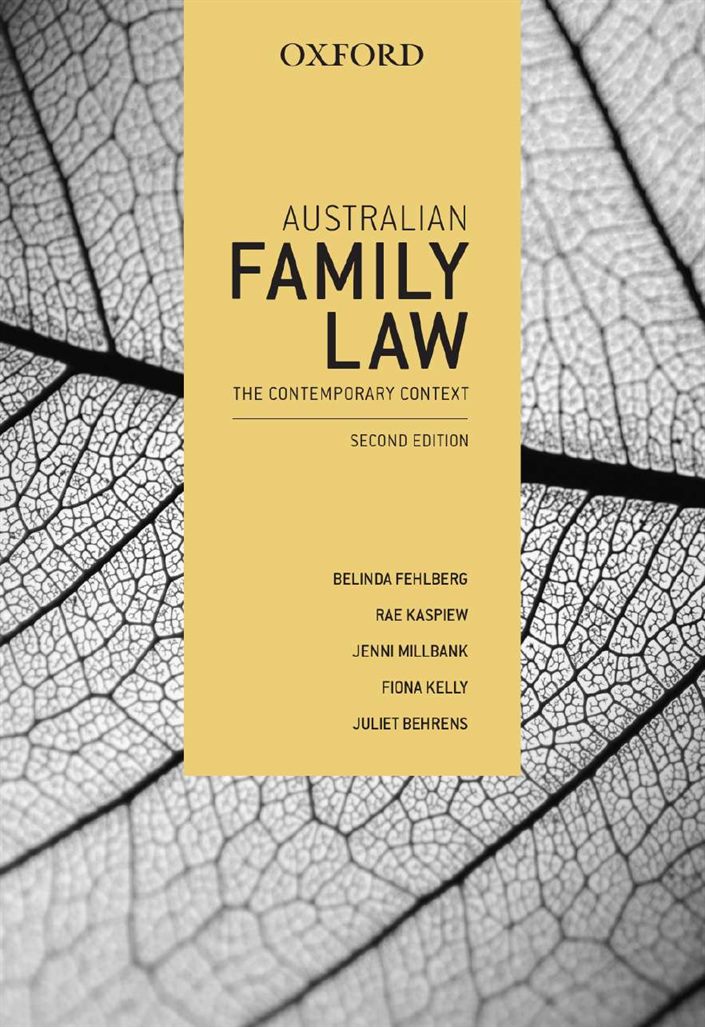Australian Family Law ebook

Australian Family Law ebook
|
ISBN: |
9780195597110 |
|
Binding: |
Ebook |
|
Published: |
18 Sep 2014 |
|
Availability: |
Available
|
|
Series: |
$149.95 AUD
$171.99 NZD
Add To Cart Add To CartOther options: Paperback $159.95 AUD $183.99 NZD
Request an inspection copyDescription
2020 Update: A Digital Update Digest is available as a supplementary resource for lecturers who prescribe Australian Family Law: The Contemporary Context, second edition. See the lecturer resources tab for more information.
Australian Family Law: The Contemporary Context encourages critical thinking and a wide understanding of contemporary Australian family law. Description and analysis of the law is set in a broad context that includes policy debates surrounding the law and the family as well as discussion of relevant empirical and research. Recent years have seen a burgeoning of empirical research relevant to family law and policy, and this research enables the authors to convey a rich sense of the law in action. The use of interdisciplinary materials means that the substantive law is presented in a highly contextualized way, which will appeal to a wide range of readers and enhance understanding.
The overarching theme of the book is the challenge of complexity in Australian family law, namely:
- Structural complexity and fragmentation
- Complexity in law and process
- Complexity in family forms and needs; and
- Complex interests
- Comprehensively up-dated to reflect the latest family law changes and research findings
- For both parenting and financial disputes, separate chapters providing:
- broader historical and empirical context
- process for resolution
- legal framework
- specific issues
Contents
Authors
Belinda Fehlberg - Professor, Faculty of Law, University of Melbourne
Rae Kaspiew - a leading Australian socio legal researcher in the areas of family law and family violence
Jenni Millbank - Professor, Faculty of Law, University of Technology, Sydney
Fiona Kelly - Senior Lecturer School of Law, La Trobe University
Juliet Behrens - Senior Associate, Dobinson Davey Clifford Simpson Lawyers
Lecturer Resources
A Digital Update Digest is available to lecturers who prescribe Australian Family Law: The Contemporary Context, second edition for their course.
The intention of this digest is to provide an update on significant developments since 2015, including statutory and case law amendments, scholarly research, as well as reports and inquiries – particularly the Australian Law Reform Commission’s 2019 Report on its inquiry into the family law system.
For more information about this resource, please contact your Oxford Learning Resource Consultant.